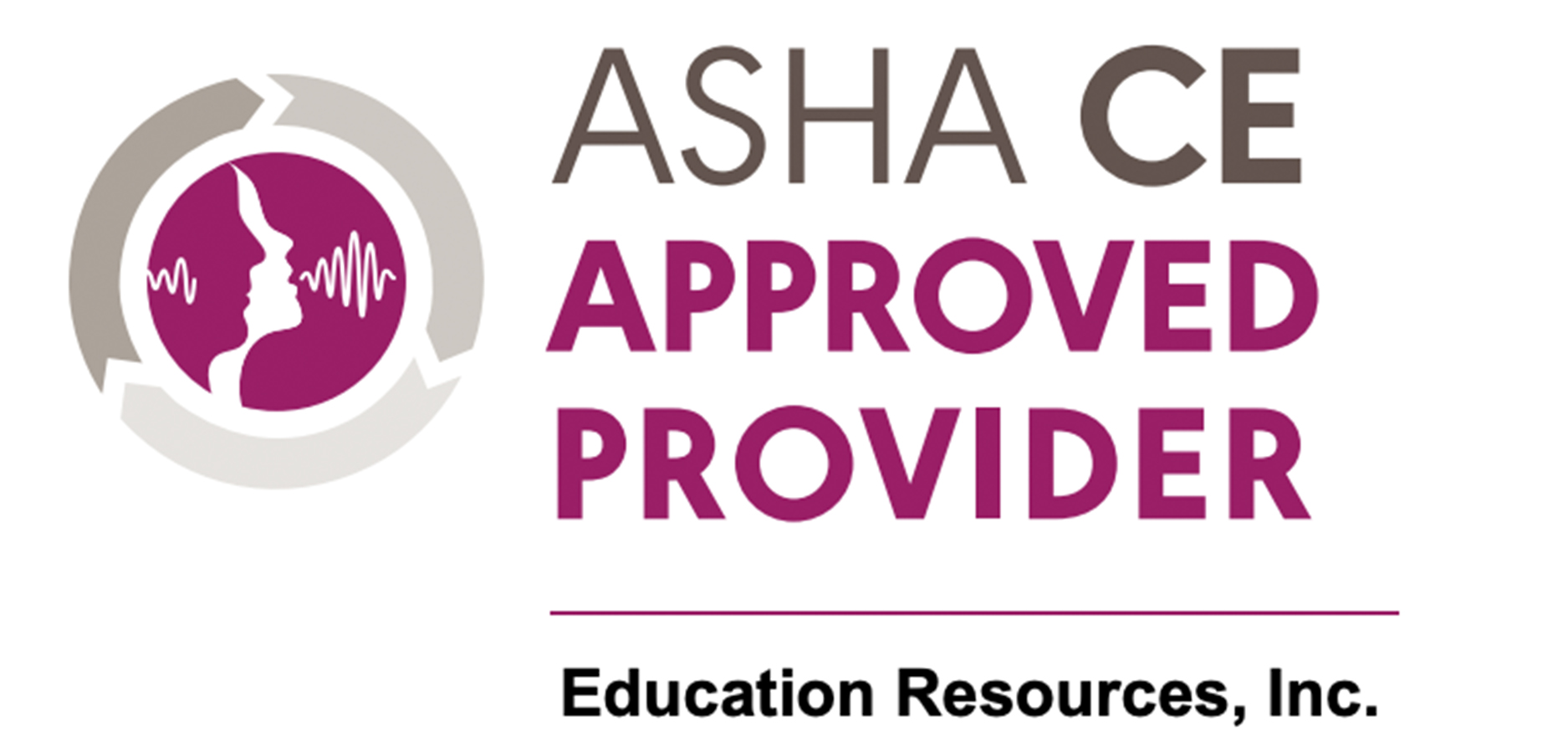This session is part of two comprehensive series:
Birth to Three Annual Conference PROGRAM B – ON-DEMAND
and
Birth to Three Annual Conference – ON-DEMAND
COURSE DESCRIPTON:
This course gives you the clinical knowledge to identify red flags of childhood apraxia of speech and develop a customized treatment plan for each individual client. Learn to consider the whole child, including their sensory system/neurodivergence to provide affirming care while identifying children with apraxia and implementing treatment strategies in the birth to three populations.
LEARNING OBJECTIVES:
- Identify red flags for apraxia in children B-3
- Recognize which prerequisites need to be addressed prior to initiating apraxia treatment
- Select the most appropriate treatment techniques
- Choose the appropriate sequencing of treatment based on the individual child
AUDIENCE:
Birth to three therapists including OTs, PTs, SLPs, and Special Educators.
COURSE OUTLINE:
Childhood Apraxia of Speech
Prerequisite for initiating Apraxia Treatment
- Current Communication system to meet needs
- Can the child tell family if they are hungry, tired, need to use the bathroom, etc.?
- Introducing communication methods different from speech
- Sign language, low-tech AAC, SGD, and gestures
Treatment approaches
- Research supporting each approach
- Benefits and limitations of each program
- Appropriate age range
- Who the approach is best suited for.
- Programs/Approaches
- Dynamic Temporal and Tactile Cueing (DTTC)
- The Kaufman Speech to Language Protocol (K-SLP)
- The Speech-EZ Apraxia Program (EZ Does It)
- Prompts for Restructuring Oral Muscular Phonetic Targets (PROMPT)
- Rapid Syllable Transition Training (ReST)
- Integrated Phonological Awareness Training (IPA)
- Nuffield Dyspraxia Program, Third Edition (NDP3)
Impact of the pandemic on all child speech acquisition and motor planning
- Is it apraxia or the result of limited engagement and opportunities to motor plan?
- Modified approaches for those without the true diagnosis of Apraxia
Important things to know about CAS
- One size does not fit all: treatment combinations work best
- Parent Education
- Frequency and Intensity of practice
- Why segmentation is not helpful to CAS
- Multimodal cues (visual, verbal, tactile, with feedback after each production)
- Vowel distortions and speech intelligibility (example)
How to get started
- Favorites Book with pictures (Nancy Kaufman course)
- Hand Gestures to pair with speech productions
- Phonemic Inventory
- Pure Vowels (Speech Stickers/Easy Does it)
- Diphthongs (Speech Stickers/Easy Does it)
- Environmental/Animal sounds (Prosody Play)
Choosing Targets
- What’s next? CV, VC, and VCV
- Aim for low target numbers (small stimulus items) and high frequency (as many trials in as playful a manner as possible)
- How to target these items in play rather than using cards
Tips for High Frequency
- ”Lock Box” Game
- Clicker
- Abacus
- Play sabotage repetition
VIDEO: Pulling it all together!
Danielle Carey, MS, CCC-SLP, COM®, is a board-certified speech-language pathologist (ASHA) and a board-certified orofacial myologist through the International Association of Orofacial Myology. She specializes in myofunctional therapy, pediatric feeding including infant feeding, tethered oral tissues (TOTs Specialty Training), and childhood apraxia of speech. She is certified as a DIR/floor time provider and certified in Sequential Oral Sensory (SOS) approach to feeding. A proud member of ASHA, ICAP, and the IAOM.
Danielle is also a dedicated clinical instructor for several continuing education companies helping other clinicians advance their knowledge surrounding tongue ties, pediatric feeding, apraxia, and neurodiverse affirming care.
Financial Disclosures: Danielle Carey receives an honorarium from Education Resources Inc. for this course. She receives a salary from NC Tongue Tie Center as a treating SLP/COM® and receives compensation as a Clinical Instructor for several other continuing education companies.
Non-Financial Disclosure: Published research on OMT and speech and is currently working on 6 research papers in the pre-publication phase, as well as the current conference chair for IAOM 2025 conference.
Once you purchase an online course you will have access to the course materials. If you have purchased this course, please ensure you have logged in to your account in order to take the exam.
Once you purchase an online course, you will have the opportunity to take an exam to test your retention of the material. If you have purchased this course, please ensure you have logged in to your account in order to take the exam. The exam must be completed with a pass rate of 80% or more in order to receive your certificate of attendance.
This course meets the criteria for 3 contact hours (0.3 CEUs) Intermediate Level. License #_________.
Education Resources Inc. is an AOTA Approved Provider of professional development. Course approval ID#09073. This Distance Learning-Independent course is offered at 3 contact hours 0.3 CEUs. (Intermediate level, OT Service Delivery & Foundational Knowledge). AOTA does not endorse specific course content, products, or clinical procedures. This course can be used toward your NBCOT renewal requirements for 3 units. Approved Provider for the FL Occupational Therapy Association CE Broker for 3.5 CE Hours - CE Broker #20-1214890. This course meets the approval of the TX Board of OT Examiners. ASHA CE Provider (Intermediate level)This session applies 0.3 ASHA CEUs toward approval but must be combined with all Part B Sessions to receive ASHA CEUS. ASHA CE Provider approval and use of the Brand Block does not imply endorsement of course content, specific products, or clinical procedures. ASHA credits are accepted by the TX Department of License and Renewal. This course has been approved by the MD State Board of Physical Therapy Examiners for 3 Continuing Education Hours. This session applies 3 hours toward approval but must be combined with entire course to receive approval by the MN Board of PT for 3 CE Hours, #13323. Approval #2407-33 by the NJ State Board of Physical Therapy Examiners for 3 CEC's. Approved sponsor by the State of IL Department of Financial and Professional Regulation for Physical Therapy for 3.5 contact hours. The IL Early Intervention Training Program has approved this event for 3 hours of EI credential credit in the area of 1 AS, 1 INT, 1 ATY. Approved provider by the NY State Board of Physical Therapy for 3.5 contact hours (0.35 CEUs). Education Resources Inc. is an Approved Agency by the Physical Therapy Board of CA, PTs will receive 3 CEUs. Approved Provider by the NM Board of Physical Therapy for 3 CE Hours. Approved Provider for OK State Board of Medical Licensure & Supervision #BAP202310003.This activity provided by the Texas Board of PT Examiners accredited provider Approval #2210017TX for 3 CCU's and meets continuing competence requirements for PT's and PTA's licensure renewal in Texas. The following state boards of physical therapy accept other states’ approval: AK, AR, AZ, DC, DE, GA, HI, ID, IN, KS, KY, MA, MI, MO, MS, NC, OR, PA, RI, SC, UT, VA, VT, WI, WY. The following state boards of physical therapy either do not require course pre-approval or do not require CEUs for re-licensure: AL, CO, CT, IA, ME, MT, NE, ND, NH, SD, WA. 3 hours of this course qualify towards the discipline-specific hours for the 20-hour requirement for NDTA re-certification. They do NOT qualify towards the 8-hour NDTA Instructor requirement for re-certification.
Education Resources Inc. 266 Main St, Suite 12, Medfield, MA 02052 • 800-487-6530



